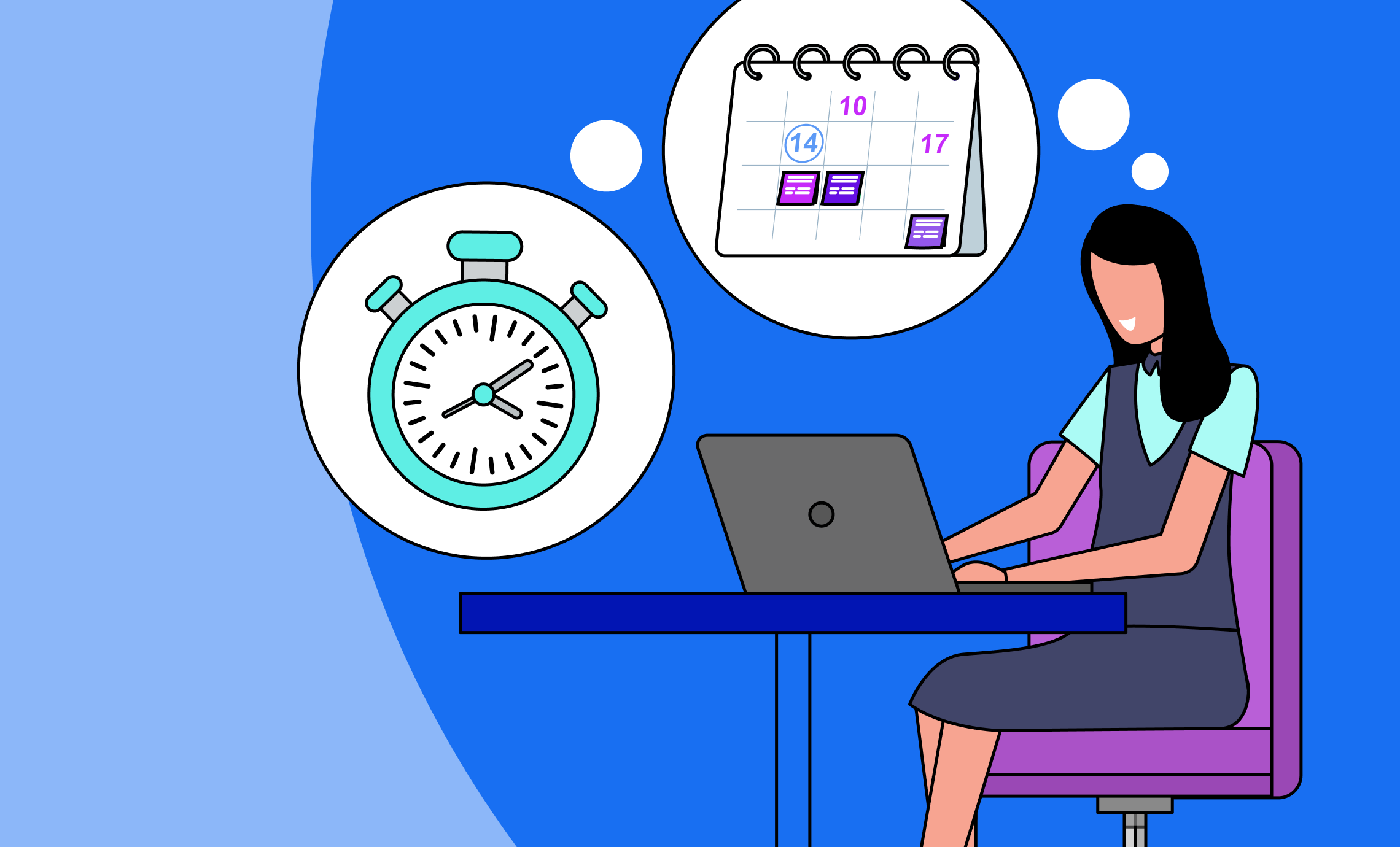Planning an event can be an exhilarating and complex endeavor, full of intricate details and diverse considerations. Whether you are organizing a conference, seminar, or workshop, abstracts are crucial in elevating the overall experience.
They play a pivotal role in capturing the essence of an event and generating interest among potential attendees.
Join us as we unravel the significance of abstracts, explore their purpose, and unlock the potential of technology to revolutionize event planning. Let us dive in and discover how abstracts can be a momentous change in organizing successful and engaging events.
What Makes a Good Abstract?
Crafting an effective abstract is the key to captivating potential attendees and generating excitement for your presentation. Let us look at the essential components that make an abstract shine.
Key Components of an Abstract
An abstract serve as a concise summary of a subject, capturing its essence and conveying essential information to potential attendees. A good abstract involves incorporating key components that make it compelling and informative.
Here are the essential elements of how to write an abstract:
- Clear and Succinct Title: The title of your abstract should be attention-grabbing and accurately reflect the theme or topic. It should be concise yet descriptive, providing potential attendees with a clear understanding of what to expect.
- Introduction: The introduction of your abstract should set the stage by briefly explaining the purpose and significance of your study. It should entice readers and give them a compelling reason to continue reading.
- Objective and Scope: Clearly state the topic’s aim and define its scope. Describe what attendees can expect to learn, experience, or achieve by participating. This helps potential attendees gauge the presentation’s relevance to their interests or professional development.
- Key Themes and Topics: Highlight the main themes and topics covered during the presentation. Provide a brief overview of each case, emphasizing the value and insights attendees can gain from each session or presentation.
- Engaging Content: Craft the abstract to spark curiosity and capture the reader’s attention. Use concise and engaging language, employing active verbs and impactful descriptions. Avoid jargon or technical terms that might alienate or confuse potential attendees.
Best Practices
To create a compelling abstract that resonates with potential attendees, consider the following best practices:
- Keep It Concise: An abstract should be succinct, ideally fitting within a predefined word or character limit. Focus on capturing the most critical information while maintaining clarity and coherence.
- Emphasize Benefits and Takeaways: Clearly communicate the benefits and takeaways that attendees will gain from the presentation. Highlight the knowledge, skills, or connections they can acquire, emphasizing the practical applications and value they will receive.
- Use a Consistent Tone and Style: Maintain a consistent tone throughout the abstract, aligning it with the overall theme and atmosphere of the subject. The style should resonate with the target audience and reflect the event’s purpose, whether formal, casual, or professional.
- Proofread and Edit: Ensure your abstract is free of grammatical and spelling errors. Proofread carefully and consider seeking a second opinion to ensure clarity and coherence.
Common Mistakes to Avoid
While crafting an abstract, be mindful of these common mistakes to enhance its effectiveness:
- Lack of Clarity: Avoid vague or ambiguous language that can confuse potential attendees. Clearly articulate the purpose, objectives, and expected outcomes of the event.
- Overwhelming Technical Details: While providing enough information is essential, refrain from overwhelming readers with excessive technical jargon or complex concepts. Strive for a balance between conveying key points and maintaining accessibility for a broader audience.
- Inadequate Organization: Ensure a logical flow of information in your abstract. Use headings or bullet points to structure your content, making it simple for readers to navigate and comprehend.
- Neglecting Proofreading: A poorly proofread abstract creates a negative impression and undermines the presentation’s credibility. Take the time to meticulously proofread your abstract, correcting errors and improving clarity.
Technology Solutions for Abstract Management
Managing your abstracts tends to be a time-consuming process. Fortunately, there are various digital tools available to help streamline the task. By leveraging technology, you can save time and ensure high-quality abstracts.
Benefits of Using Technology for Abstract Management
Embracing technology for abstract management brings many benefits that can save time, increase productivity, and enhance the overall event experience.
Here are some key advantages:
- Streamlined Processes: Technology solutions automate and simplify various aspects of abstract management, eliminating the need for manual processes. From submission to review and selection, these tools provide a seamless and efficient workflow, reducing administrative burdens and allowing event planners to focus on higher-value tasks.
- Centralized Data: Abstract management systems centralize all abstract-related information in one place. This eliminates the hassle of searching emails or spreadsheets and ensures that crucial data is easily accessible. Event planners can quickly retrieve abstracts, track their status, and efficiently collaborate with reviewers and selection committees.
- Enhanced Review and Selection: Technology solutions enable a more systematic and objective review process. Reviewers can access abstracts online, provide feedback, and rate submissions using standardized evaluation criteria. This improves the fairness and quality of the review process, ensuring that the best abstracts are selected for the event.
- Customization and Flexibility: Many abstract management systems offer customization options, allowing event planners to tailor the submission process to their specific requirements. From defining submission fields to setting review criteria, these tools provide the flexibility needed to align the abstract management process with the unique goals and objectives of the event.
What To Look for in an Abstract Management System
Of course, not all abstract management systems are created equal, so look for the features and benefits that best suit your needs. Here are a few important considerations:
- Easy Submission and User Experience: Look for a system that offers a user-friendly interface, making it effortless for presenters to enter their information and upload supporting documents. A streamlined and intuitive submission process increases participation and reduces barriers for potential contributors.
- Robust Review and Selection Tools: An effective system should provide comprehensive and efficient tools for reviewers, including online access to abstracts, customizable review forms, and rating systems. The ability to track reviewer progress and facilitate communication among the review team significantly enhances the quality and speed of the selection process.
- Data Security and Privacy: Prioritize a system that emphasizes data security and privacy. Ensure it includes encryption, secure data storage, and role-based access control to protect sensitive information. Compliance with data protection regulations, such as GDPR (General Data Protection Regulation), is crucial for maintaining trust and safeguarding participants’ personal data.
Attendee Interactive’s review management system offers these features to ensure data is handled securely and kept private. From sophisticated routing protocols to customizable review forms, Attendee Interactive helps your organization streamline the selection process and protect data.
Abstract Submission and Review Process
Step 1: Preparing for Submission
Before opening abstract submissions, preparing all the necessary materials is crucial. Follow these steps:
- Define submission guidelines: Clearly outline the requirements, formatting guidelines, and submission deadlines for abstracts.
- Create submission categories: Determine the categories or tracks for abstract submissions, if applicable.
- Communicate submission details: Inform potential presenters about the submission process, guidelines, and any supporting materials required.
Step 2: Online Submission
Once you are ready to accept abstract submissions, guide presenters through the following steps:
- Provide submission instructions: Clearly communicate how presenters can access the abstract submission system and create an account if required.
- Collect essential details: Request information such as abstract title, authors’ names and affiliations, and any additional pertinent details.
- Specify file formats and limits: Clearly state the accepted formats and sizes for abstracts and supplementary materials.
- Enable submission verification: Implement a review step where presenters can preview and verify the accuracy of their submission details and uploaded files.
- Designate a submission deadline: Communicate the deadline by which presenters must submit their abstracts.
To simplify the submission process, it is crucial to provide presenters with instructions on accessing the abstract submission system and creating an account if required. An intuitive abstract management system can also help streamline the process.
For example, you can provide a FAQ (Frequently Asked Questions) section where presenters can find answers to frequent questions and troubleshooting help in case, they encounter any technical issues. Additionally, set up an email address that presenters can use to contact your team if they need further assistance or have inquiries about the submission process.
Step 3: Confirmation and Acknowledgment
After presenters submit their abstracts, ensure they receive timely confirmation and acknowledgment. Take the following steps:
- Send confirmation emails: Automatically generate and send confirmation emails to presenters upon submitting their abstracts.
- Include submission details: Include relevant information in the confirmation email, such as the abstract title, submission ID, and submission date.
- Offer contact information: Provide contact details to presenters so they can reach out if they have any questions or concerns about their submissions.
Step 4: Abstract Review Process
Once abstract submission closes, initiate the review process. Here is what to do:
- Assign reviewers: Assign abstracts to reviewers based on their expertise and availability.
- Establish evaluation criteria: Provide reviewers with clear guidelines and standards to ensure consistent and objective assessments.
- Facilitate reviewer feedback: Set up a platform or system for reviewers to provide feedback, suggestions, or comments on the abstracts they review.
- Monitor progress: Regularly check in with reviewers to ensure they are making progress and meeting review deadlines.
- Coordinate reviewer discussions: If necessary, facilitate discussions or meetings among reviewers to collectively evaluate abstracts or resolve discrepancies.
Abstract review is the most critical step in the submission and review process. Having well-planned and organized strategies can help ensure that each submitter receives a fair, unbiased assessment of their work.
Technology plays a crucial role in ensuring high-quality abstract reviews. Tools like Google Docs can help simplify the review process by managing reviewer feedback, monitoring progress, and coordinating any discussions between reviewers.
You can also utilize Attendee Interactive as your hub for collecting, managing, and reviewing abstracts. By streamlining the process and providing real-time feedback, Attendee Interactive helps make sure no detail goes unnoticed.
Step 5: Notification of Acceptance or Rejection
After completing the review process, notify presenters of the decision regarding their abstracts. Take these steps:
- Send acceptance/rejection emails: Send personalized emails to each presenter informing them of the acceptance or rejection of their abstract.
- Provide detailed feedback (optional): If desired, offer constructive feedback or suggestions for improvement to rejected presenters to help them enhance their work for future submissions.
- Communicate next steps: In acceptance emails, outline any further instructions or requirements for accepted presenters, such as presentation preparation or revised abstract submission.
Post-abstract Submission Considerations
After the abstract submission and review process concludes, event planners must shift their focus toward post-submission considerations.
Following Up with Authors and Presenters
Maintaining open lines of communication with authors and presenters is crucial for a successful event. Once the acceptance and rejection notifications have been sent out, it is important to continue engaging with those involved.
For accepted abstracts, provide clear instructions on any additional requirements or deadlines. This may include:
- Submitting revised abstracts
- Preparing presentations
- Providing supplementary materials
By offering support and guidance, you can ensure presenters are well-prepared and equipped to deliver their work effectively at the event.
Measuring the Success of the Abstract Collection Process
Evaluating the effectiveness of the abstract collection process is vital for event planners to improve their strategies. Analyze submission metrics, including:
- Total number of abstracts received
- Submission rates by category or track
- Geographical distribution of presenters
These metrics offer insights into participation and engagement levels, helping you understand the impact of your abstract collection efforts.
Additionally, assess the efficiency of the review process by considering factors such as:
- Review completion time
- Quality of reviewer feedback
- Any challenges faced during the evaluation
This evaluation allows you to refine the review process for future events, ensuring a smoother and more streamlined experience.
Best Practices for Storing and Accessing Abstracts for Future Use
Proper storage and easy accessibility of abstracts are essential for future reference and research. Implementing best practices in this area ensures that the valuable knowledge shared through abstracts is readily available and can be effectively utilized.
Consider the following practices:
- Secure Data Storage: Store abstracts in a safe and centralized location, such as a dedicated database or cloud-based system. Ensure data encryption and implement appropriate access controls to protect sensitive information.
- Organized File Naming Convention: Establish a consistent and structured file naming convention for abstracts to facilitate easy searching and retrieval. Include relevant details such as submission ID, presenter name, or abstract title.
- Document Versioning: Maintain a version control system to track revisions or updates to abstracts over time. This ensures the availability of the most recent and accurate information.
- Back-up and Disaster Recovery: Regularly back up abstract data to prevent data loss or corruption. Implement a robust disaster recovery plan to safeguard abstracts in the event of system failures or unforeseen incidents.
Attendee Interactive: Your Hub for Event Planning and Abstract Management
Remember, a well-crafted abstract is the gateway to an impactful presentation. By implementing effective strategies, leveraging technology, and embracing best practices, you can create an enriching event experience that displays groundbreaking research and fosters meaningful connections among presenters and attendees.
Attendee Interactive offers a comprehensive Abstract Submission Management system that eliminates manual processes, centralizes data, and provides customizable options to suit your event’s unique needs.
With Attendee Interactive, you can efficiently collect, review, and store abstracts, ensuring a seamless experience for all stakeholders.
Request a demo today!


